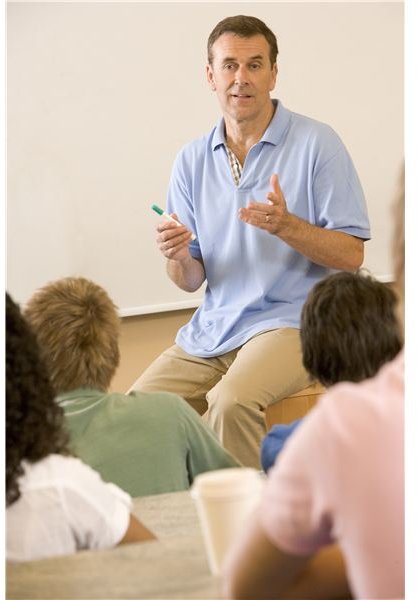Including Current Topics in History to the High School History Curriculum: Beyond the Textbook
Beyond the Text Book
Coming up with ideas for teaching modern history can present scheduling and resource material problems to any high school History
teacher. Text books usually lump the most recent decades into one or two chapters at the book’s end, which isn’t even reached until summer break is on the horizon. How can a teacher make history relevant when the events that actually touched students’ lives are breezed through in a quick and disengaging summary?
One solution is using outside sources to incorporate modern history into the curriculum throughout the year in a way that gets the students actively engaged. For instance, the last Friday of every month students could present a lesson they created on an assigned topic using modern history movies and current books as sources. This can be a group or individual assignment depending on class size and teacher preference.
Let’s take one topic as an example to see how this modern history teaching idea could work. This particular assignment is meant for eleventh and twelfth grade students as it is complex, and the resources deal with mature themes.
The topic is The CIA’s Impact on Afghanistan’s History. The main resources are the fictional book, A Thousand Splendid Suns by Khaled Hosseini and the movie, Charlie Wilson’s War. Two students can be assigned one each or, if it’s a joint assignment, the students can divide the work amongst themselves. Each source should be supplemented by at least two more reference materials–for example, reviews, online or print news articles, movie analysis, non-fiction books, historical documents, reputable blogs or websites, online encyclopedias, etc.
Here are the assignment requirements:
- Write a short two- to three-page paper complete with thesis explaining whether or not they believe CIA policy influenced Afghanistan’s history and current state. If so, how?
- Prepare a fact sheet for the class detailing points that support the thesis.
- Write two short answer questions with answers, one of which the teacher will add to the next test.
The teacher may want to provide some dates, facts, and people that must be covered. For this specific topic, I would include Gulbuddin Hekmatyar, Ahmad Shah Massoud, the events of April 27, 1978, and December, 1979, and mujahideen. This is also a good opportunity for students to practice their media literacy skills, as sources often explain their mission or editorial policies on their websites. Resources detailing these facts, dates, and people are listed below. Many of these resources can be used with other modern history teaching ideas and topics such as examining our current and possible future roles in Afghanistan.
Another great piece of historical fiction by Hosseini is <em>The Kite Runner</em>. This book would also work for this assignment, and it can be used in an interdisciplinary curriculum. Read Promoting Independent Thinking With The Kite Runner to learn more.
Additional modern history teaching ideas include discussing how the 9/11 attacks have affected aspects of our lives, such as air travel, or the Israeli-Palestinian conflict.
References and Resources
References:
Author’s Personal Experience
Resources:
- The New York Times review by Michiko Kakutani of A Thousand Splendid Suns.
- US News & World Report, Afghan Warlords, by Anna Mulrine.
- The Guardian, Myths and the Mujahideen, by Simon Tisdall.
- Heritage.org, The Soviet Invasion of Afghanistan, by James Phillips
- Newsweek, Gulbuddin Hekmatyar: America’s New Best Friend? by Ron Moreau.
This post is part of the series: Tossing the Textbook
This series offers social studies lesson plans using movies, fictional novels, news articles, and internet sources. Some of the lessons can be taught cooperatively with an English, Media, or Science class. Reviews of some of the books and movies suggested are also part of this series.
- Tossing the Text Book: Incorporating Modern History Into History Lessons
- History of Early Man: Thawing Out Some Early Man Leftovers
- Early Man Evolution Lesson Plan: Why We’re So Chatty
- Toss the Textbook & Use “The Killer Angels” to Teach the Civil War
- Review of the History in Film Website for Educators
